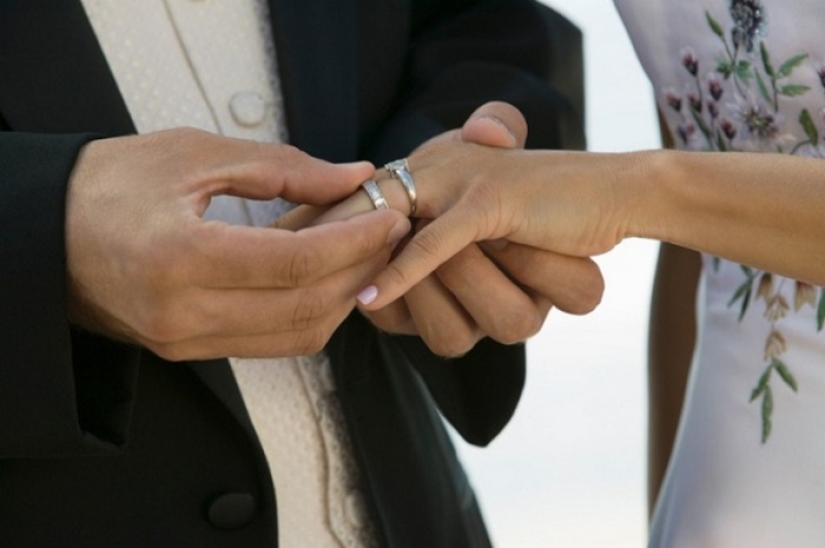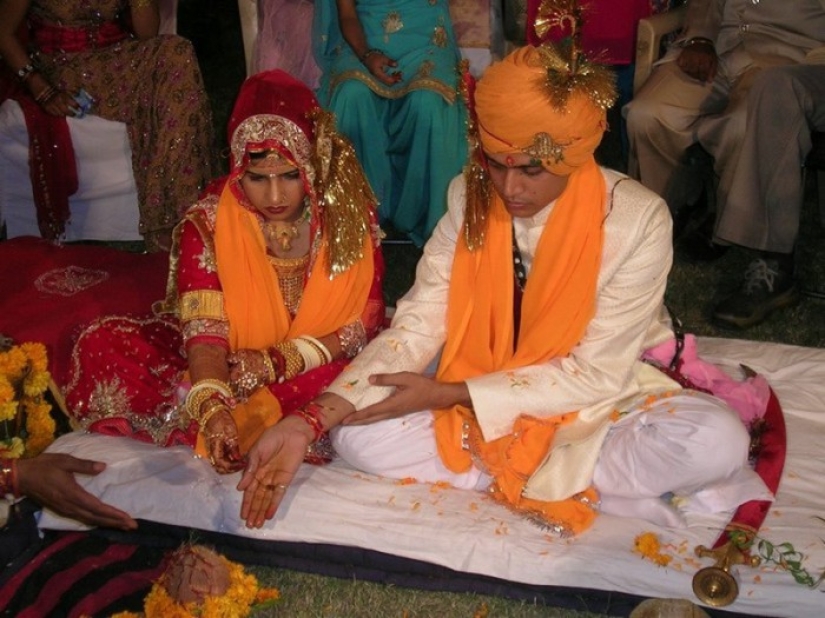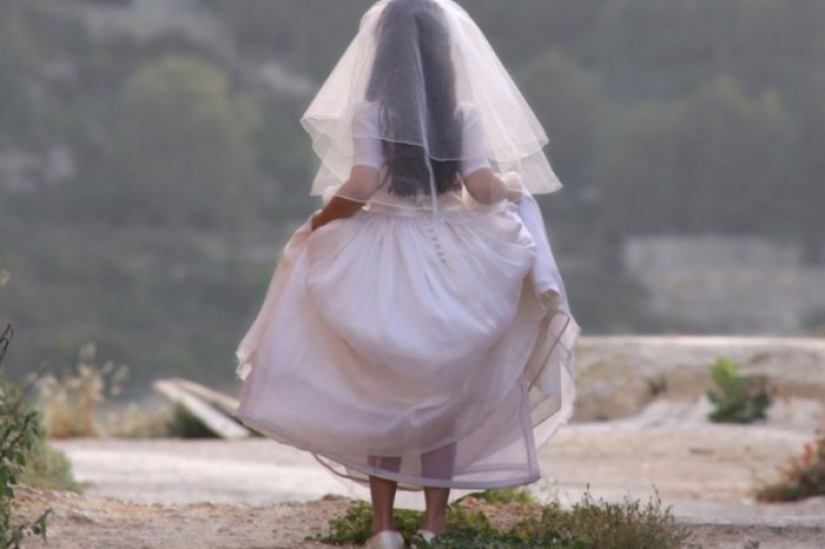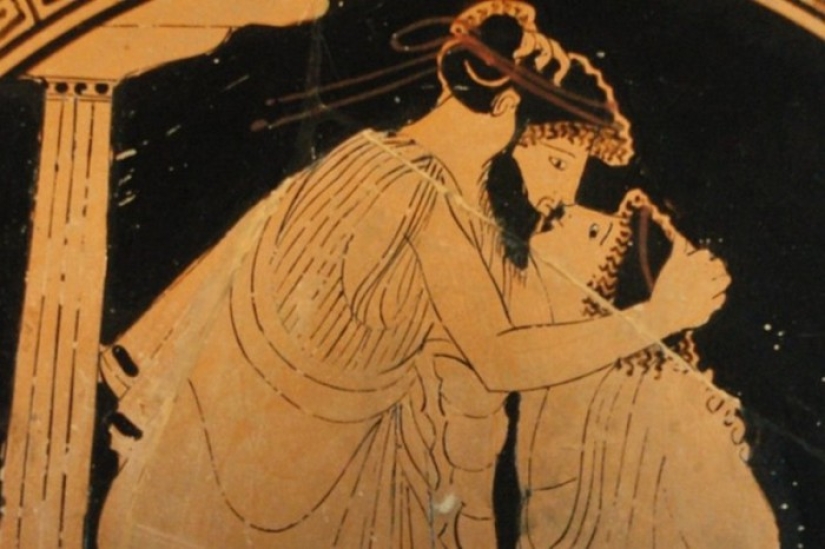10 Unorthodox Forms Of Marriage, Many Of Which Are Still Used Today
Categories: Society
By Pictolic https://pictolic.com/article/10-unorthodox-forms-of-marriage-many-of-which-are-still-used-today.htmlIt is believed that traditional marriage between a man and a woman has been the standard throughout human history. But despite the fact that such unions were indeed the most common form of marriage, other concepts of the family institution existed in parallel, which will be discussed in our review.
(Total 10 photos)
 Source: novate.ru
Source: novate.ru

1. Polyandry
Polyandry is a form of marriage in which one woman is married to several men. Throughout history, this type of relationship has been extremely rare. In the modern world, polyandry is practiced in a few remote villages on the Tibetan plateau. In cultures where polyandry was adopted, it was often used to preserve family property in regions with limited arable land and high birth rates. It was essentially a form of family planning: most often, a group of brothers married a woman of the same age, after which they lived and worked together. The children in the family called the eldest husband "father", and the rest of the husbands - "uncle".

2. Levirate and sororate
Under this system, marriage is seen not as a union of two persons, but as a union between families. Such a marriage emphasizes rights and obligations between kin groups. In a levirate, a man marries the widow of his dead brother. In some cases, children born of the union are considered children of the first husband. Levirate is practiced in the tribal communities of North and South America, Africa, India and Australia.
In sororate, which is practiced among the tribes of North America and India, the relatives of a deceased woman offer her sister to a widower. In some cultures, a sororate is concluded if the first wife is infertile.

3. Temporary marriage
Temporary marriage was popular in the ancient Islamic world and was also sometimes referred to as fixed-term marriage. A contract was concluded between a man and a woman for a married life for a certain period of time. Traditionally, there were a number of restrictions: a woman could only marry a Muslim, Christian, or Jew, although men were encouraged to temporarily marry only chaste Muslim women. The two main conditions of a temporary marriage were a stipulated period of time and a dowry. Today, this practice is used in Iran as a cover for women of easy virtue.

4. Ghost marriage
In many parts of the world, it is permissible to marry a person who has already died, or to contract a marriage between two dead people. In China, after death, a man was buried next to a woman so that he would not be alone in the afterlife. The reasons for ghost marriages are varied. According to one custom, a younger brother must marry after his older brother. If the elder brother died, then he was married to a ghost so that the ghost of his vengeful brother would not appear to the younger brother after the wedding. Ghost marriage is also practiced among the Nuer and Atut tribes in southern Sudan. If a man dies without an heir, then one of his brother's wives is obliged to marry his ghost. If she has children, they will be considered the heirs of the deceased brother.

5. Complex marriage
John Humphrey Noyes created a utopian community in New York State that became known as the Oneida. He believed that Christ has risen, the Kingdom of Heaven is rapidly approaching, and people are able to achieve perfection in this world. Referring to quotations from the Bible, John stated that every man in society should be married to every woman. Monogamy and jealousy were seen as sin and idolatry.
Community members punished those who practiced monogamy. In order to reduce the birth rate and provide sexual pleasure for women, Noyes advocated the practice of "male continence," or intercourse without ejaculation. It was also supposed to promote self-control. Every woman was free to accept or reject the claims of any man. This system lasted for three decades.

6. Devadasi
In this South Indian practice, a young girl was married to a deity or temple (often she was given in marriage even before birth). The word "devadasi" literally translates as "servant of God." They had to be attractive, hardworking, smart, able to dance well. Their duties included singing and dancing in the morning and evening in honor of their god, as well as generating income for their temples through donations from the audience. Devadasis were traditionally held in high regard and had a higher status than other women in society. It was considered an honor to marry a god. However, the principles of this practice were soon perverted, and devadasis began to be used as women for bed comforts of aristocrats and priests.

7 Child Marriage
One of the most significant arguments against the superiority of conservative traditional marriage is that many such marriages are immoral in modern society—for example, in a number of traditional heterosexual cultures, child marriage was considered the norm. In medieval Europe, girls usually married at the age of 12. This made sense due to the extremely short life expectancy at the time, but by today's standards, it's terrible. Although child marriage eventually disappeared in Europe, it is still practiced in many developing countries around the world.

8. Tongqi
In China, it is considered obligatory to marry and give birth to an heir. Homosexuality in this country is treated much more negatively than in many Western countries. One solution for many homosexual men is to enter into formal marriage with a heterosexual woman. One Chinese sexologist claims that 90 percent of homosexual men in China are in this kind of marriage, called tongqi. The disadvantage of such marriages is that the partner often has no idea about the husband's orientation before marriage and subsequently suffers from feelings of rejection and intimate dissatisfaction.

9. Otherworldly spouses
The Baoule tribe in Côte d'Ivoire believe that each person has the spirit of a spouse with whom he married in the spirit world before he was born into this world. They are called "blolo bian" ("otherworldly man") and "blolo blah" ("otherworldly woman"). The cause of family strife can be considered jealousy on the part of the otherworldly half.

10. Same-sex marriage
Same-sex marriage is often considered a recent innovation. In fact, various forms of same-sex marriage have existed throughout history. In the 1960s and 70s, some gay activists were even given permission to marry. You can also recall same-sex relationships that were described in Babylonian, Greek and ancient Egyptian literature. In ancient Rome, the emperor Nero married a eunuch.
Keywords: Marriage | Family | Spouses
Post News ArticleRecent articles

American Alex Greenberg, who moved to China, collects funny and brain-bearing examples of Chinese fashion in his Shanghai Observed ...

New Year is a holiday of magic and fulfillment of wishes. Naturally, I want this holiday to be remembered for a long time and to be ...
Related articles

What kind of wedding traditions do not happen! The Scots pour dirty slush over the bride, some peoples of India have decided to get ...

In Imperial times women had no power over him. The sphere of influence of the peasant and the boyar wives was limited to raising ...

Millions of people around the world buy lottery tickets in the hope of winning a happy life. They dream of luxury cars, luxury ...

In a recent issue of sexual harassment on everyone's lips. Inappropriate and Intrusive signs of attention began to see around, even ...